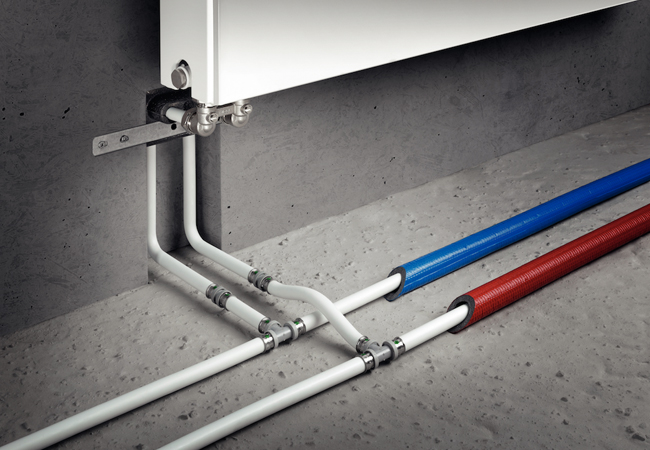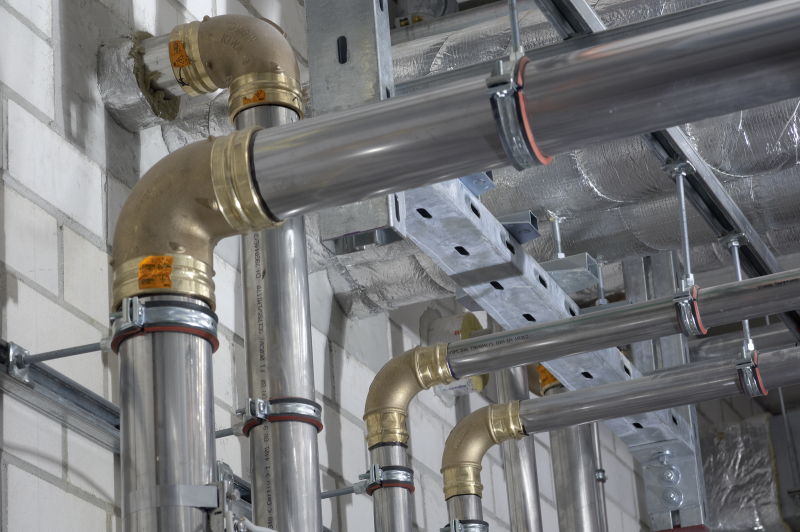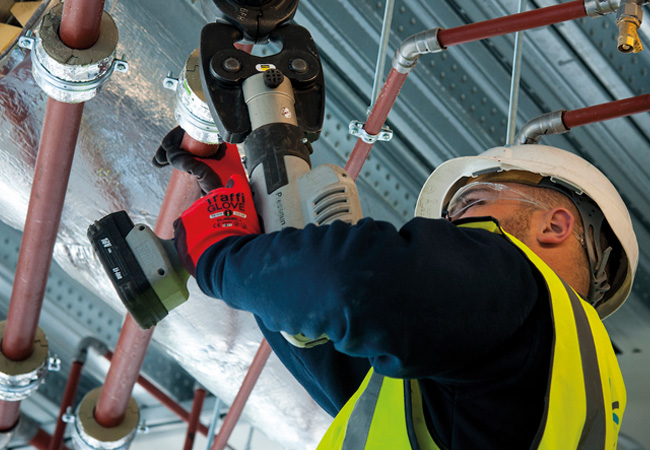
While the tried and trusted nature of materials such as copper and stainless steel means that they continue to be the go-to options for many building services systems, the properties of multilayer pipe can provide a number of benefits.
As the name suggests, multilayer pipe is a composite material consisting of inner and outer layers of thermally resistant cross-linked polyethylene (PEX) and a layer of aluminium between. The aluminium at the core delivers durability and ensures it retains its shape whilst the inner and outer plastic layers protect from corrosion. Similar to copper, multilayer pipe is suitable for heating systems, hot and cold water pipework and potable water installations.
Among the biggest challenges for pipework installation are tight spaces, or complex geometry within the building to which the pipe must conform. The structure of multilayer pipe allows it to be easily and accurately shaped using hand-held tools without it buckling or kinking. This means the pipe can be adapted to the angles required without the need to make multiple cuts and joints. Furthermore, multilayer pipe is supplied in lengths of up to 200m and can be used directly off the coil – the installer simply needs to cut the length of pipe that is required. As it can be bent rather than cut to achieve a change of direction it allows longer pipe runs with fewer joints.
This is important for large and complex systems where the number of connections can have a significant impact on the performance of building services. The pipe, fittings and design of the system as well as any equipment connected to the pipework will all contribute to the friction in the pipework and reduce the flow and can result in low water pressure.
The resistance added by each component can be measured as a pressure loss coefficient, also known as the zeta value. The interior surface of the pipe contributes to the friction within the system so longer pipe runs will increase the pressure loss. Energy is also lost when the water changes direction either through a bend in the pipe or an angled connector. For this reason, the choice of both pipe and connectors with low zeta values will help optimise the performance of the system.
As with metal pipe, press connection technology can be used to provide a simple, fast, clean and reliable connection method for multilayer pipe. This presents a significant benefit for engineers already familiar with the technology.
However, it is important to consider the design of the fitting to ensure it does not cause additional friction or deform the pipe when pressed, reducing the internal dimensions. Intelligently engineered fittings will avoid this deformation and should also include internal deflectors that have been specially designed to optimise the flow of water to reduce the overall resistance.
Fittings with very low zeta values, such as Viega’s Smartpress system can reduce pressure loss by as much as 80% compared to standard designs. This has a significant effect on the total pressure loss.
For example, a standard design connector with a zeta value of 13.9 will result in the pressure loss of 100mbar at a flow rate of 3 m/s while a flow optimised alternative with a zeta value as low as 2.7 will result in a pressure loss of only 19mbar at the same flow rate.
Furthermore, during installation it is important that any unintentionally unpressed connections can be easily identified. Some press connection products will appear to be sealed throughout initial testing and only begin to leak when the system starts working.
This has the potential to cause significant damage to the fabric of the building. By choosing a product that includes features to highlight any missed connections immediately, engineers can avoid the need for costly remedial work.
For example, Viega’s SC-Contur technology, makes any unpressed joints clearly visible during leak testing or when the system is filled for the first time.
Due to the similarities, it is possible to connect multilayer pipe and metal pipework, making it ideal for refurbishments or additions to existing systems. Press connections also offer a simple solution for linking these different types of material. Adapter components are available that not only allow both sides of the connection to be pressed but also integrate with threaded pipe if required.
Finally, while the versatility of multilayer pipe does provide a number of benefits, as with all materials it is important to select high quality products to ensure a successful installation and reliable system. Not all multilayer pipe is manufactured to the same standard and a lower quality product without the correct level of flexibility could buckle rather than bend when trying to achieve the necessary radius.
Similarly, for pipework that will carry drinking water the products must have been tested and approved to certify that it does not contaminate the water.
Continual development in multilayer pipe means it now provides building services engineers with an option to overcome certain installation challenges, either for an entire system or part of a system.
Its similarities to metal pipe in terms of installation and application means that it can be utilised without the need for specialist training, especially if the installation team is familiar with press connection technology.
For further information about Viega’s range of solutions including its Smartpress system of press connection and pipe visit: www.viega.co.uk.





